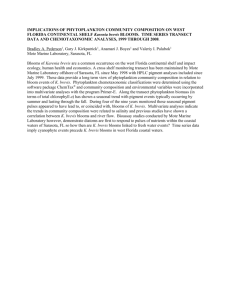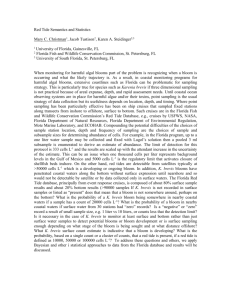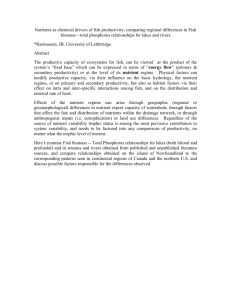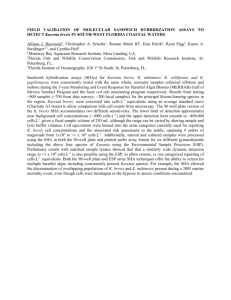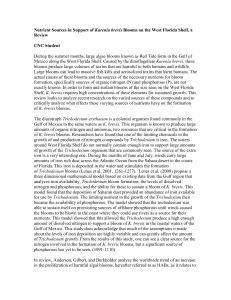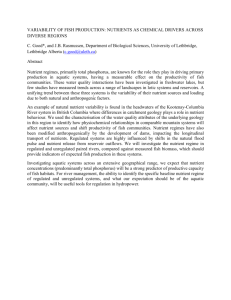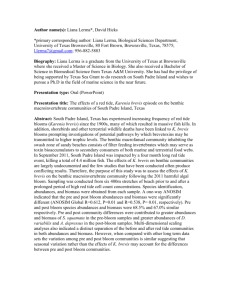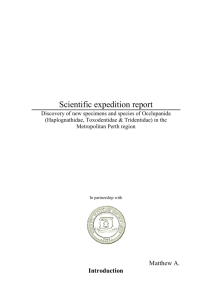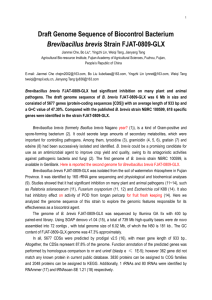shifts in nutrient sources and processing in coastal karenia
advertisement
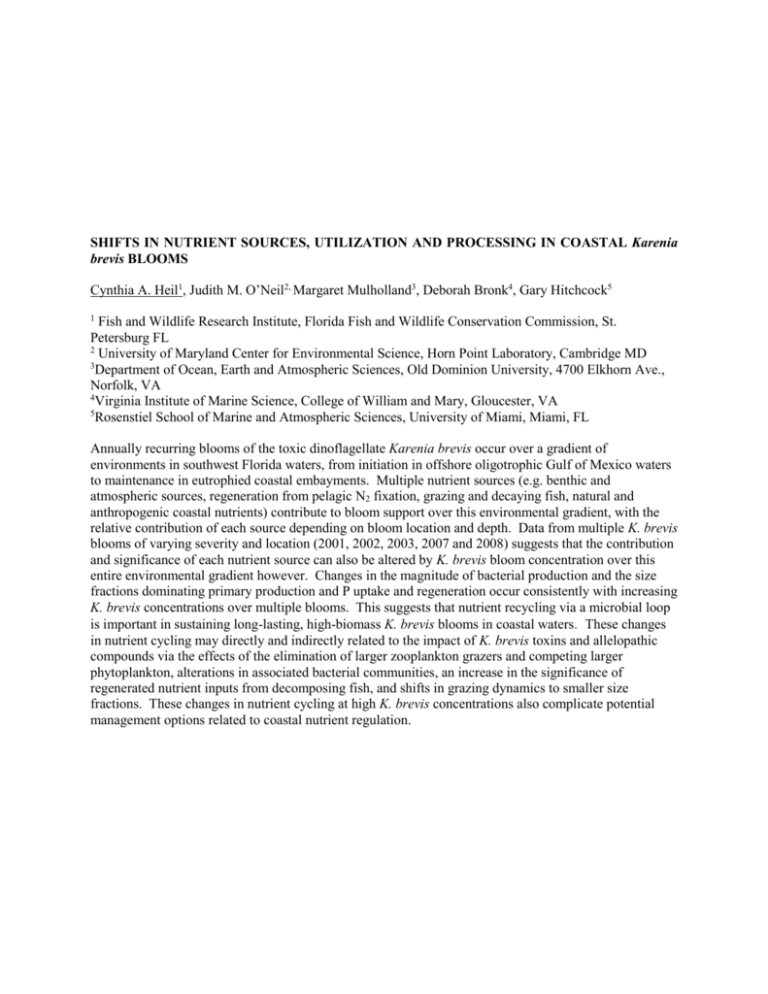
SHIFTS IN NUTRIENT SOURCES, UTILIZATION AND PROCESSING IN COASTAL Karenia brevis BLOOMS Cynthia A. Heil1, Judith M. O’Neil2, Margaret Mulholland3, Deborah Bronk4, Gary Hitchcock5 1 Fish and Wildlife Research Institute, Florida Fish and Wildlife Conservation Commission, St. Petersburg FL 2 University of Maryland Center for Environmental Science, Horn Point Laboratory, Cambridge MD 3 Department of Ocean, Earth and Atmospheric Sciences, Old Dominion University, 4700 Elkhorn Ave., Norfolk, VA 4 Virginia Institute of Marine Science, College of William and Mary, Gloucester, VA 5 Rosenstiel School of Marine and Atmospheric Sciences, University of Miami, Miami, FL Annually recurring blooms of the toxic dinoflagellate Karenia brevis occur over a gradient of environments in southwest Florida waters, from initiation in offshore oligotrophic Gulf of Mexico waters to maintenance in eutrophied coastal embayments. Multiple nutrient sources (e.g. benthic and atmospheric sources, regeneration from pelagic N2 fixation, grazing and decaying fish, natural and anthropogenic coastal nutrients) contribute to bloom support over this environmental gradient, with the relative contribution of each source depending on bloom location and depth. Data from multiple K. brevis blooms of varying severity and location (2001, 2002, 2003, 2007 and 2008) suggests that the contribution and significance of each nutrient source can also be altered by K. brevis bloom concentration over this entire environmental gradient however. Changes in the magnitude of bacterial production and the size fractions dominating primary production and P uptake and regeneration occur consistently with increasing K. brevis concentrations over multiple blooms. This suggests that nutrient recycling via a microbial loop is important in sustaining long-lasting, high-biomass K. brevis blooms in coastal waters. These changes in nutrient cycling may directly and indirectly related to the impact of K. brevis toxins and allelopathic compounds via the effects of the elimination of larger zooplankton grazers and competing larger phytoplankton, alterations in associated bacterial communities, an increase in the significance of regenerated nutrient inputs from decomposing fish, and shifts in grazing dynamics to smaller size fractions. These changes in nutrient cycling at high K. brevis concentrations also complicate potential management options related to coastal nutrient regulation.
